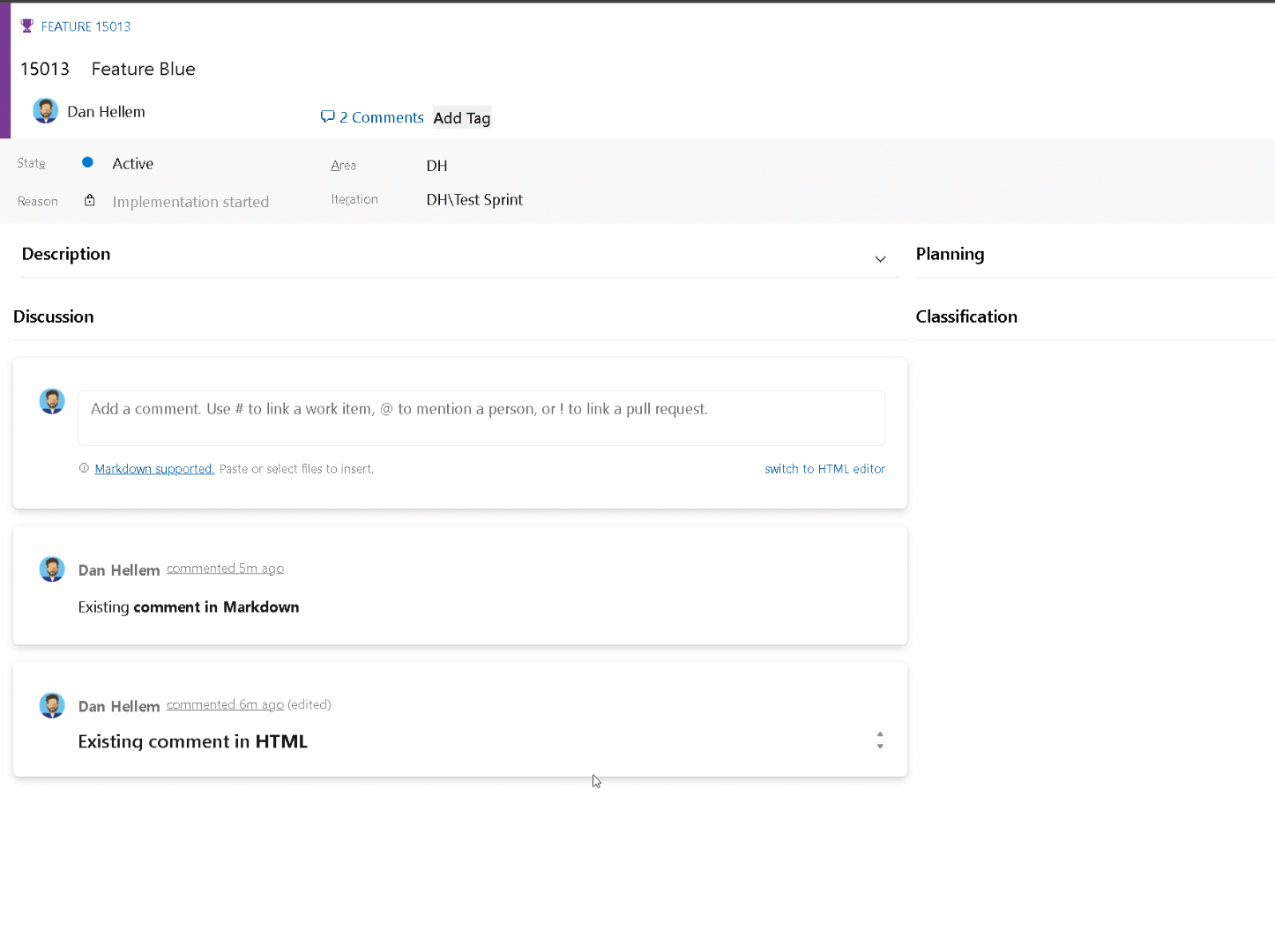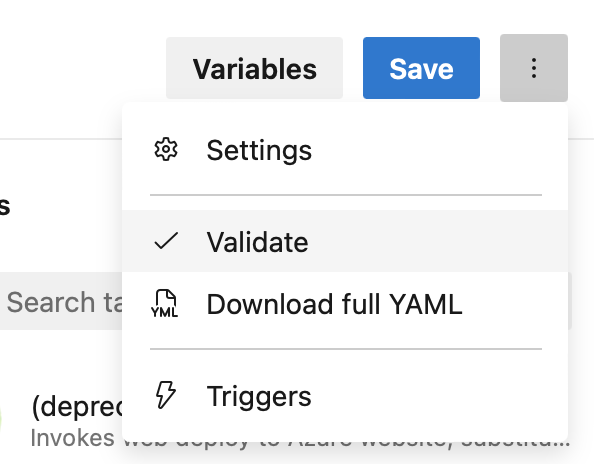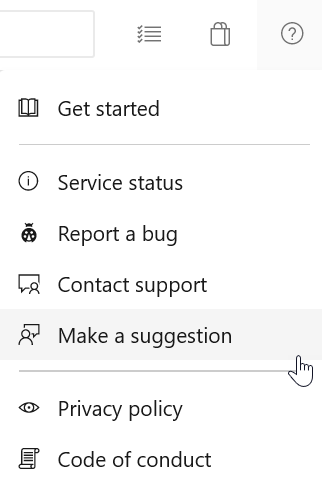Switch between HTML and Markdown editor in Azure Boards comments private preview
With this update, you can now switch between HTML and Markdown editor in Azure Boards comments.
Check out the release notes to learn more about enrolling in the private preview for this feature.
Azure Boards
Azure Pipelines
Azure Boards
Switch between HTML or Markdown on comments
A few months ago, we introduced a private preview to enable Markdown for comments on work items, aiming to replace the existing HTML editor entirely. We've received your feedback, expressing a preference for the HTML editor and we adjusted our approach. You now have the flexibility to switch between the HTML and Markdown editor at the comment level.

Here's what you should expect:
- The default editor is sticky from the last comment you created.
- You can convert existing HTML comments to Markdown.
- Once a Markdown comment is created or updated, it can't be converted to HTML.
This update is implemented across all pre-enrolled organizations and those with the New Boards Hub enabled by default. Additionally, we're extending the preview period for a few more weeks to gather more feedback. If you're interested in enrolling in the private preview, feel free to reach out directly via email, and kindly include your organization name (dev.azure.com/{organization}).
Tip
Consider enrolling in the preview only if your organization is fully committed to utilizing the New Boards Hub for all users. The experience with Markdown comments in the Old Boards may not be optimal.
Azure Pipelines
Improved YAML validation
To verify your YAML syntax is correct, you can use the Azure Pipelines web editor's Validate functionality. Thus, it's important that this functionality catch as many YAML issues as possible.

With this sprint, YAML validation is more thorough when it comes to expressions.
When writing YAML pipelines, you can use functions to define variable values.
Imagine you define the following variables:
variables:
Major: '1'
Minor: '0'
Patch: $[counter(format('{0}.{1}', variables.Major, variables.Minor ), 0)]
The Patch variable is defined using the counter function and the other two variables. In the YAML code above, the word format is misspelt. Previously, this error went undetected. Now, the Validate functionality will detect this and surface an error message.

Azure Pipelines will detect incorrect variable definitions at pipeline / stage / job level.
In YAML pipelines, you can skip the execution of stage using conditions. Typos can show up here as well, like in the following example.
steps:
- task: NuGetCommand@2
condition: eq(variable.Patch, 0)
inputs:
command: pack
versioningScheme: byPrereleaseNumber
majorVersion: '$(Major)'
minorVersion: '$(Minor)'
patchVersion: '$(Patch)'
The NuGetCommand task executes only if the value of the Patch variable is 0. Again, there's a typo in the condition, and the Validate functionality will display it.

Azure Pipelines will detect incorrect YAML conditions defined at pipeline / stage / job level.
Checks scalability Phase 3
As mentioned in our Updates to Approvals and Checks blog post, we're working toward improving our Approvals & Checks's scalability.
Advancing into Phase 3, we'll carry out weekly, day-long brownouts, during which all pipeline runs that use non-compliant checks will fail.
The scheduled brownout dates are:
- January 9, 2024, 08:00 UTC to January 10, 2024, 08:00 UTC
- January 16, 2024, 08:00 UTC to January 17, 2024, 08:00 UTC
- January 23, 2024, 08:00 UTC to January 24, 2024, 08:00 UTC
- January 30, 2024, 08:00 UTC to January 31, 2024, 08:00 UTC
Next steps
Note
These features will roll out over the next two to three weeks.
Head over to Azure DevOps and take a look.
How to provide feedback
We would love to hear what you think about these features. Use the help menu to report a problem or provide a suggestion.

You can also get advice and your questions answered by the community on Stack Overflow.
Thanks,
Dan Hellem